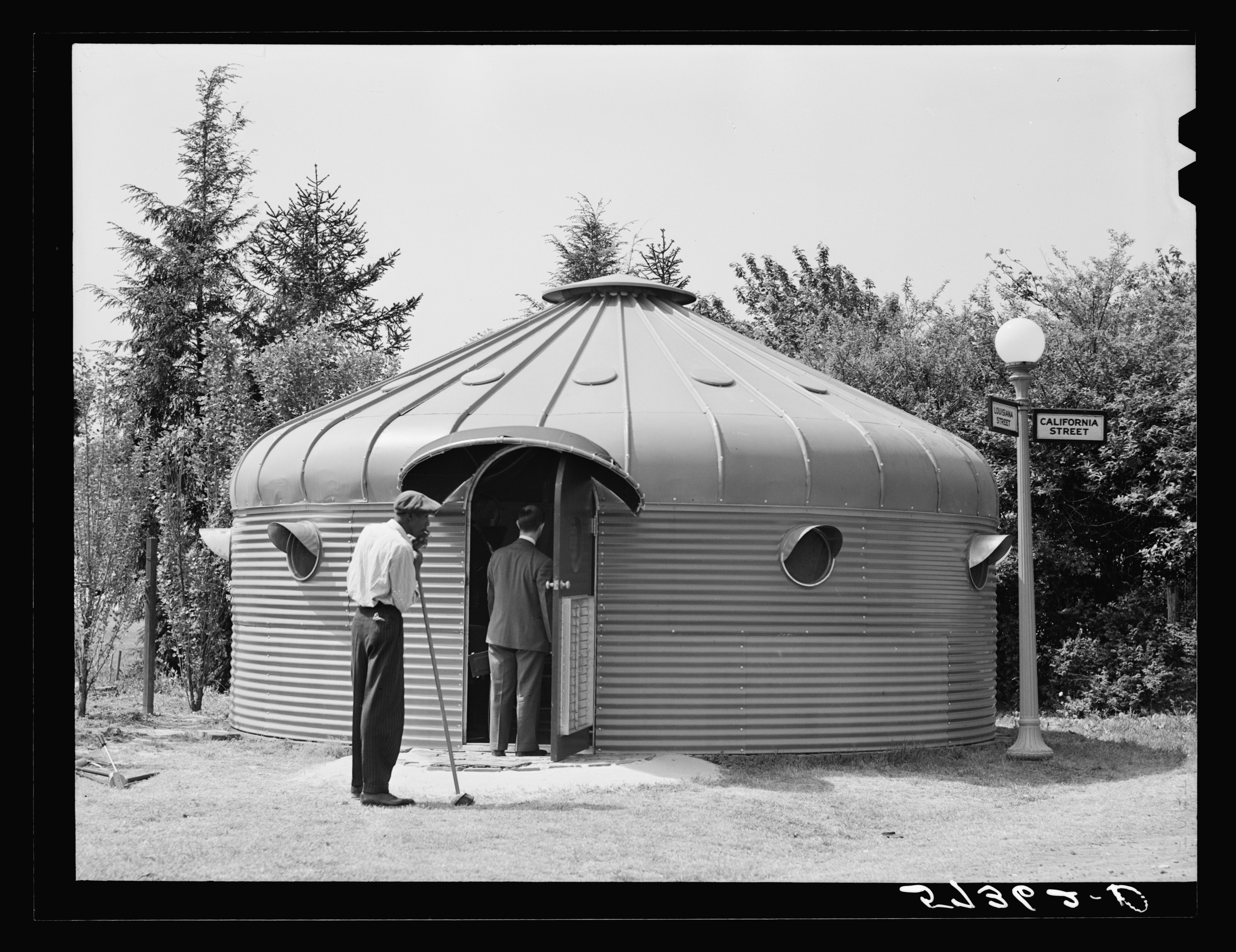Dymaxion Deployment Unit on:
[Wikipedia]
[Google]
[Amazon]
 A Dymaxion deployment unit (DDU) or Dymaxion House, is a structure designed in 1940 by
A Dymaxion deployment unit (DDU) or Dymaxion House, is a structure designed in 1940 by 
infoage.org
/ref>
"Dymaxion Deployment Units at Camp Evans in Wall, New Jersey USA"
{{Buckminster Fuller Military equipment of World War II Iron and steel buildings Buckminster Fuller
 A Dymaxion deployment unit (DDU) or Dymaxion House, is a structure designed in 1940 by
A Dymaxion deployment unit (DDU) or Dymaxion House, is a structure designed in 1940 by Buckminster Fuller
Richard Buckminster Fuller (; July 12, 1895 – July 1, 1983) was an American architect, systems theorist, writer, designer, inventor, philosopher, and futurist. He styled his name as R. Buckminster Fuller in his writings, publishing ...
consisting of a 20-foot circular hut constructed of corrugated steel looking much like a yurt
A yurt (from the Turkic languages) or ger ( Mongolian) is a portable, round tent covered and insulated with skins or felt and traditionally used as a dwelling by several distinct nomadic groups in the steppes and mountains of Central Asia ...
or the top of a metal silo
A silo (from the Greek σιρός – ''siros'', "pit for holding grain") is a structure for storing bulk materials. Silos are used in agriculture to store fermented feed known as silage, not to be confused with a grain bin, which is use ...
. The interior was insulated and finished with wallboard, portholes and a door. The dome-like ceiling has a hole in the top and a cap for ventilation.

History
TheArmy Signal Corps
The United States Army Signal Corps (USASC) is a branch of the United States Army that creates and manages communications and information systems for the command and control of combined arms forces. It was established in 1860, the brainchild of Ma ...
commissioned Fuller in 1942 to develop 200 units as quickly as possible. The units were manufactured by the Butler Manufacturing company and were deployed all around the world prior to the US entry into World War II. The cost of each unit at the time was $1,250. The wartime shortage of steel resulted in the cancellation of further production.
The Infoage Science/History Learning Center (the NJ science center at Camp Evans) has 11 surviving DDUs as seen in current satellite photos. Historical aerial photos show at least 14 between the two large H-shaped buildings for a total of over 24 units at the base from 1947 to 1970. Many of the cement pads remain after the DDU was removed. They were used for storage of hazardous materials and for small shops./ref>
See also
*Nissen hut
A Nissen hut is a prefabricated steel structure for military use, especially as barracks, made from a half-cylindrical skin of Corrugated galvanised iron, corrugated iron. Designed during the First World War by the American-born, Canadian-British ...
References
Further reading
"Dymaxion Deployment Units at Camp Evans in Wall, New Jersey USA"
{{Buckminster Fuller Military equipment of World War II Iron and steel buildings Buckminster Fuller